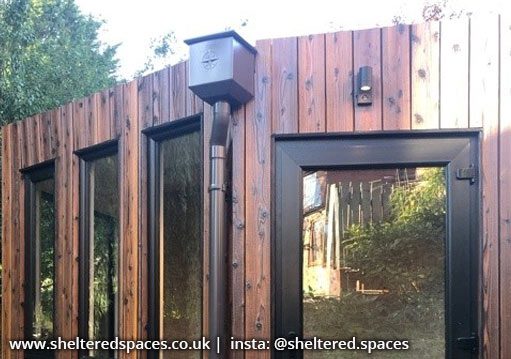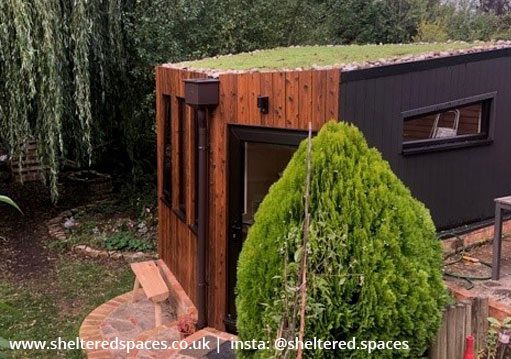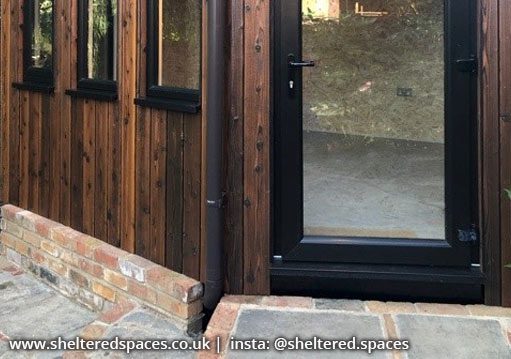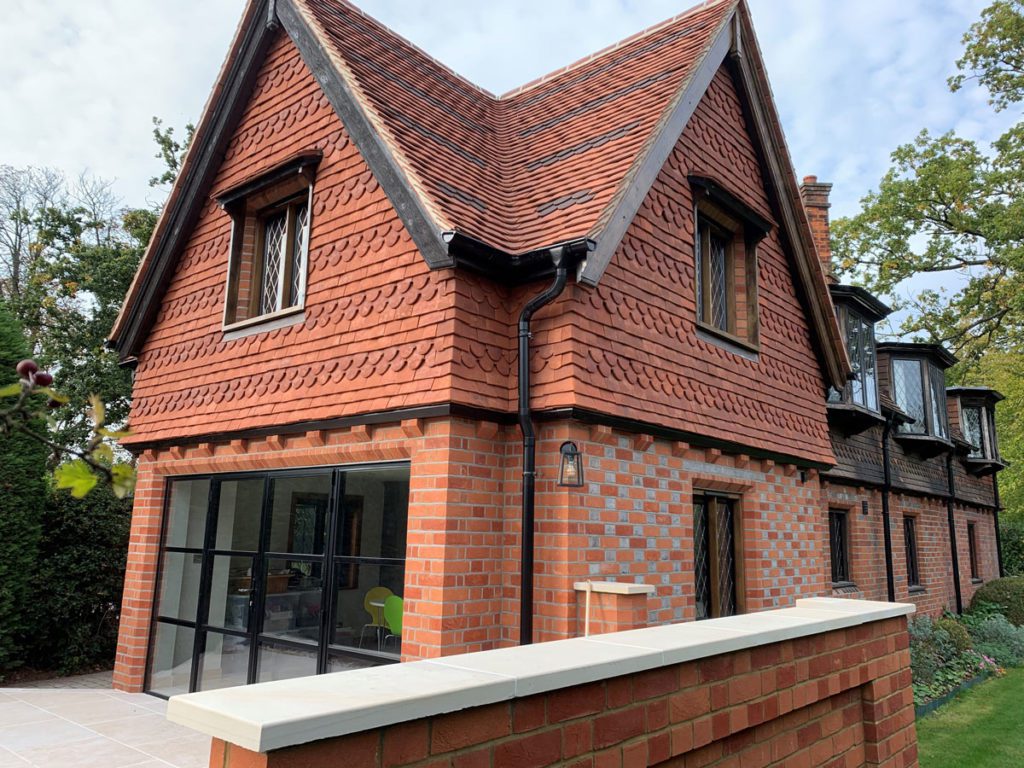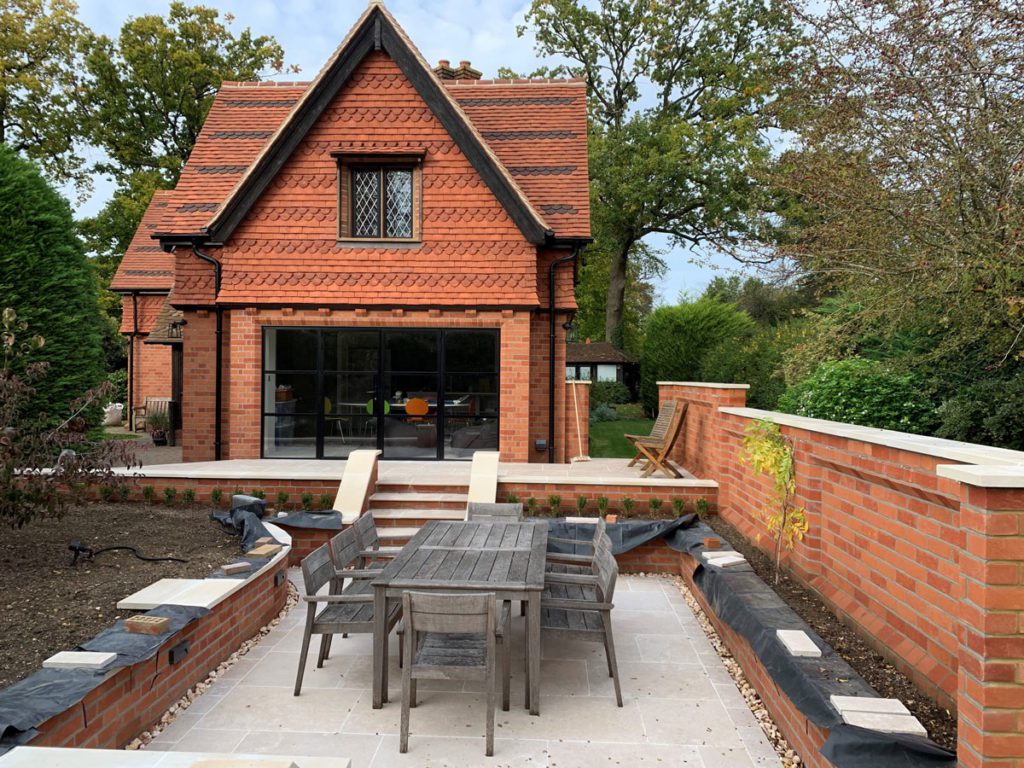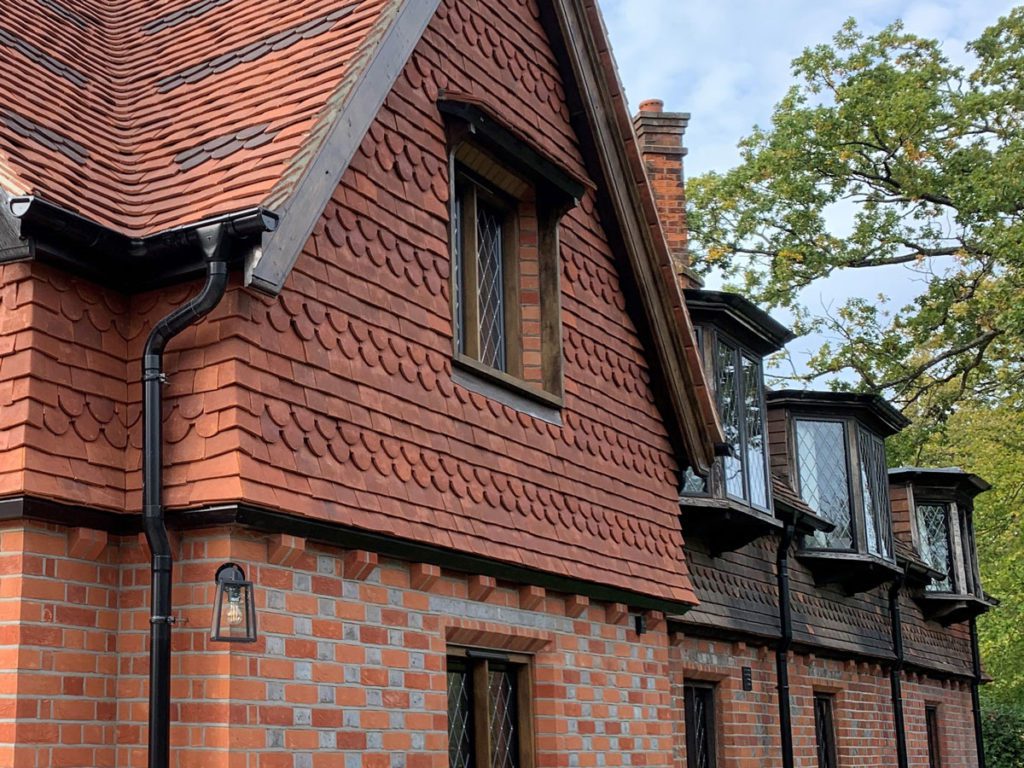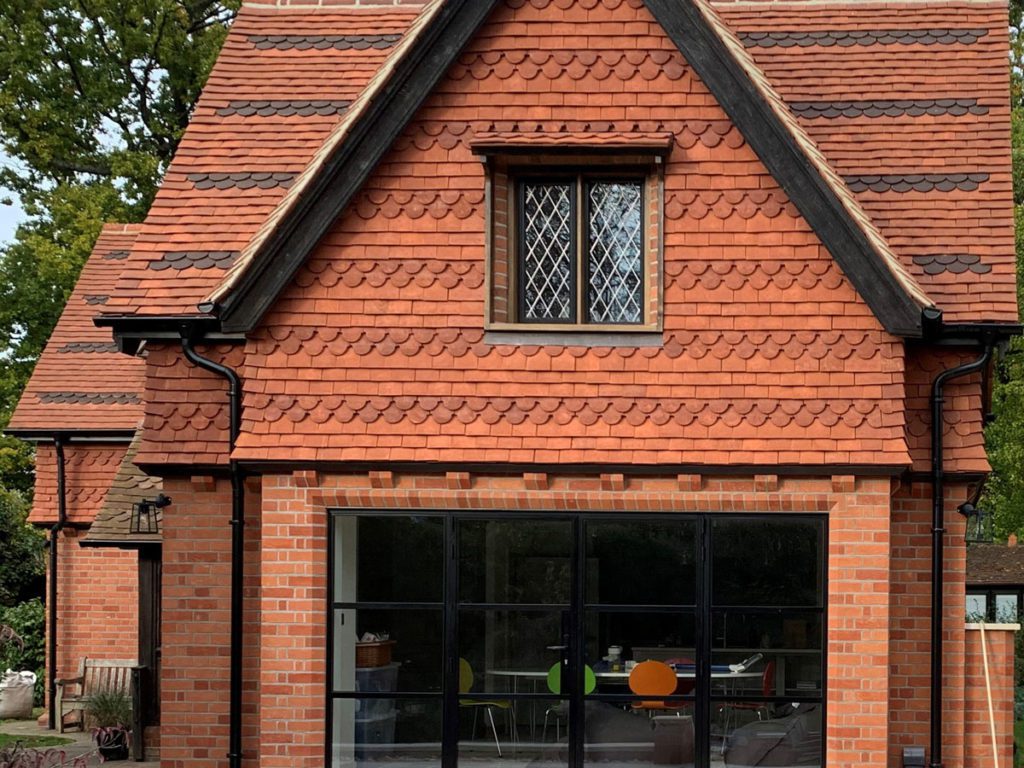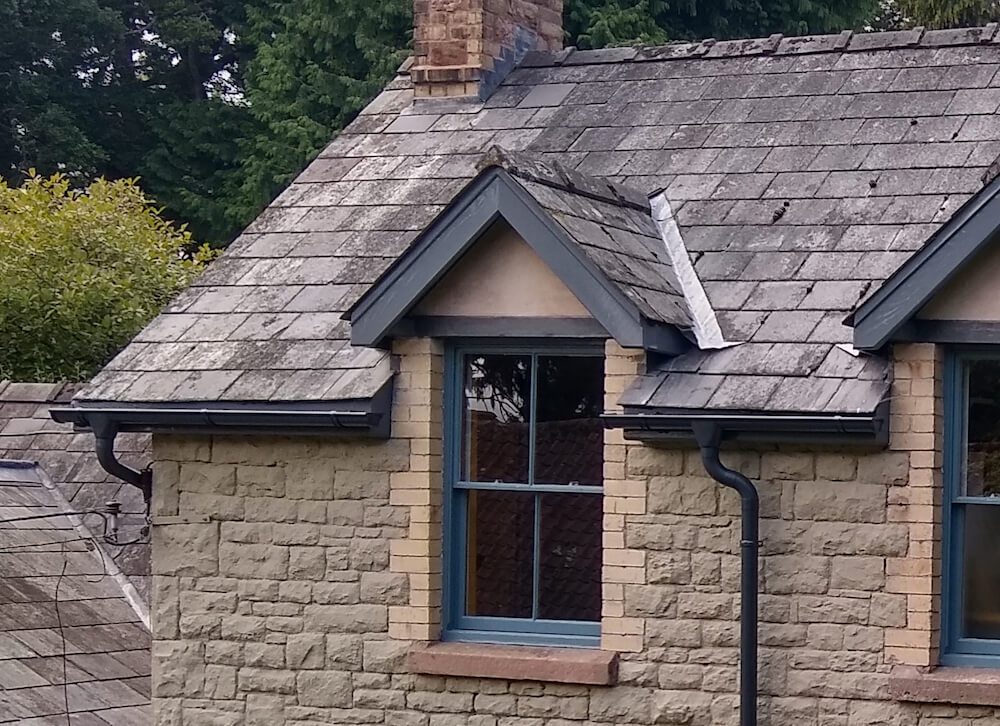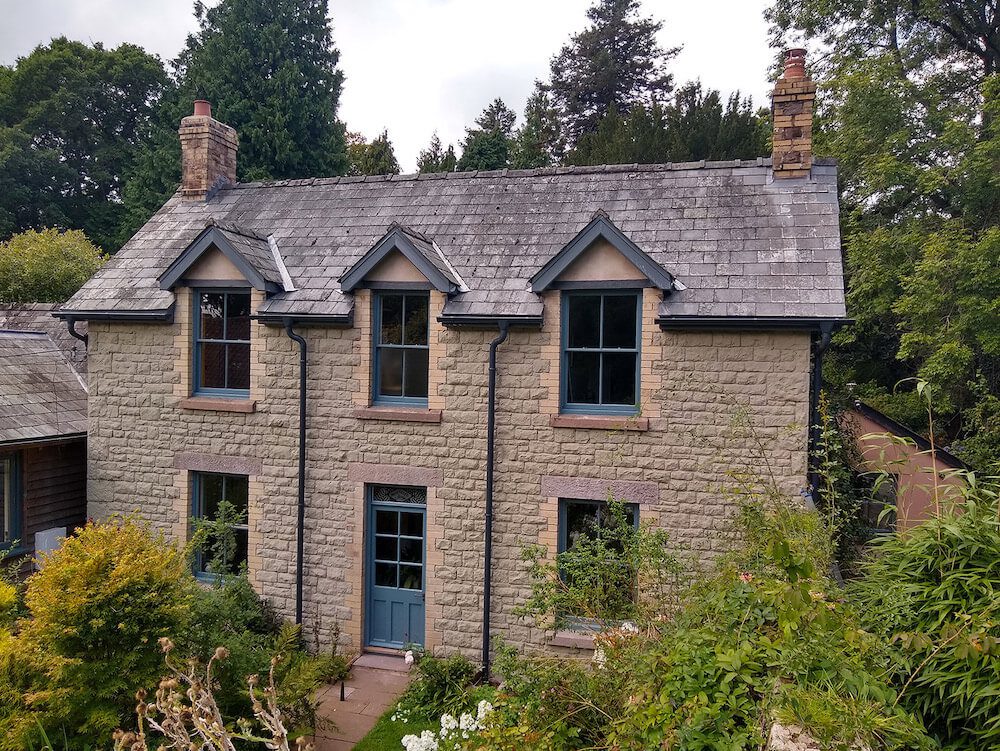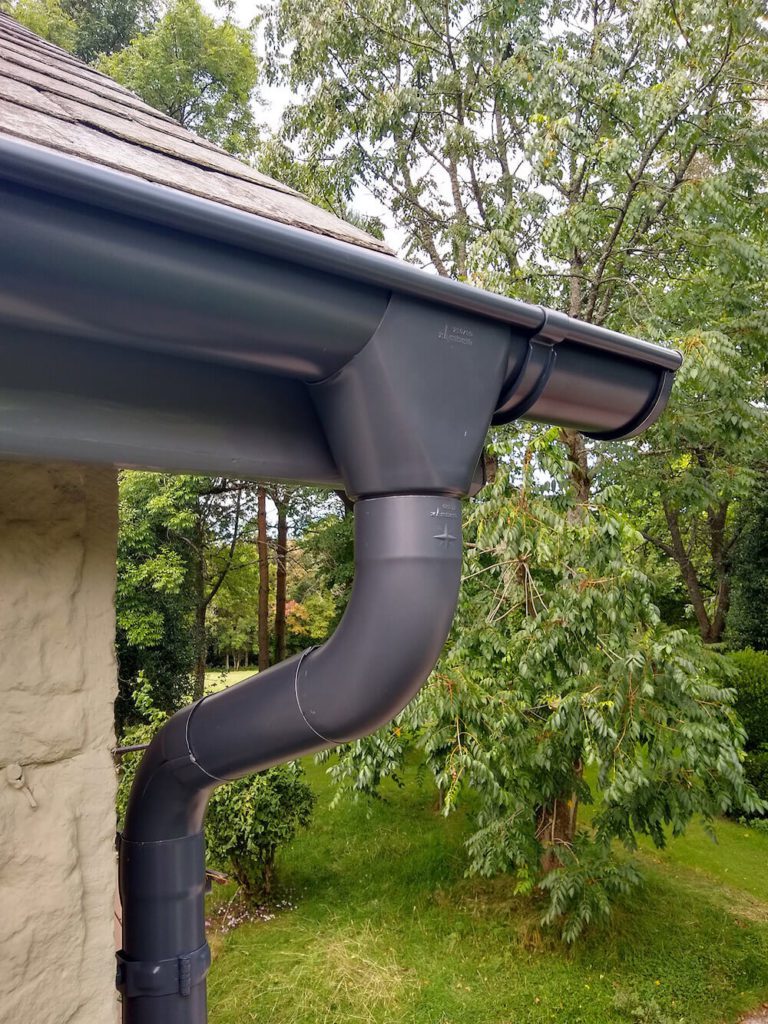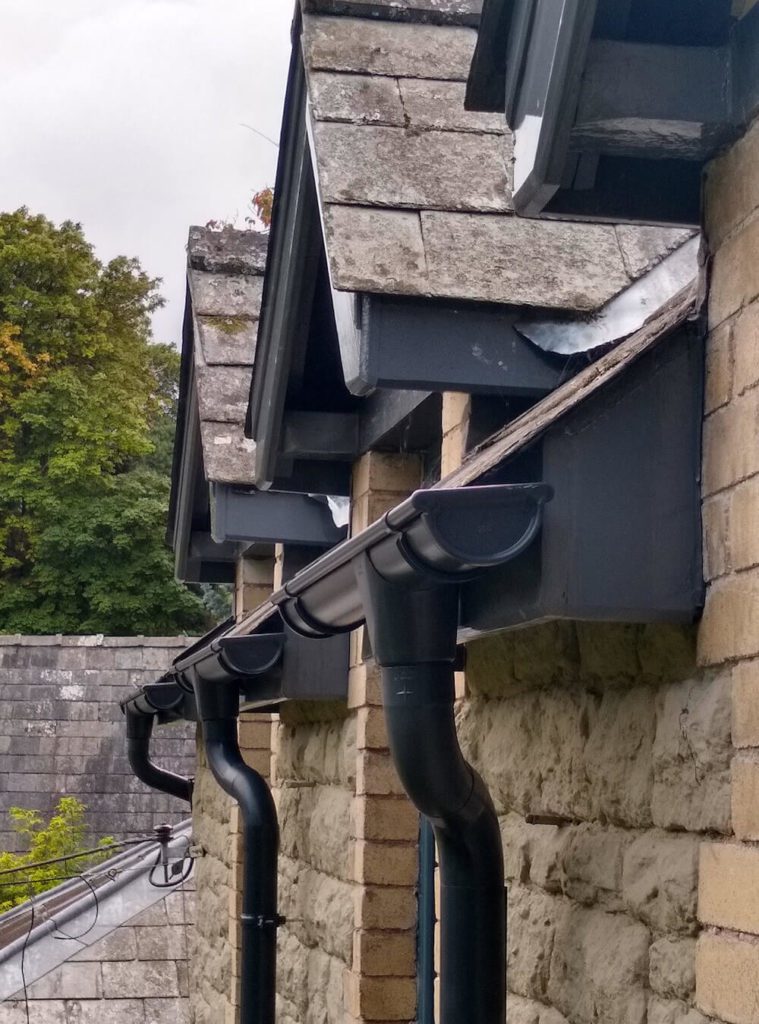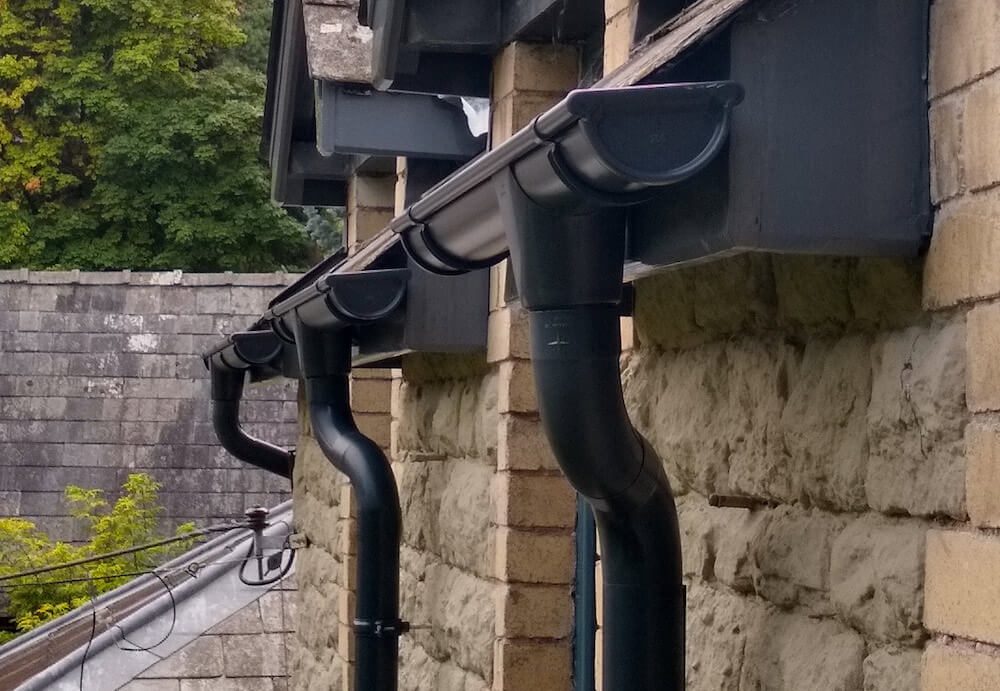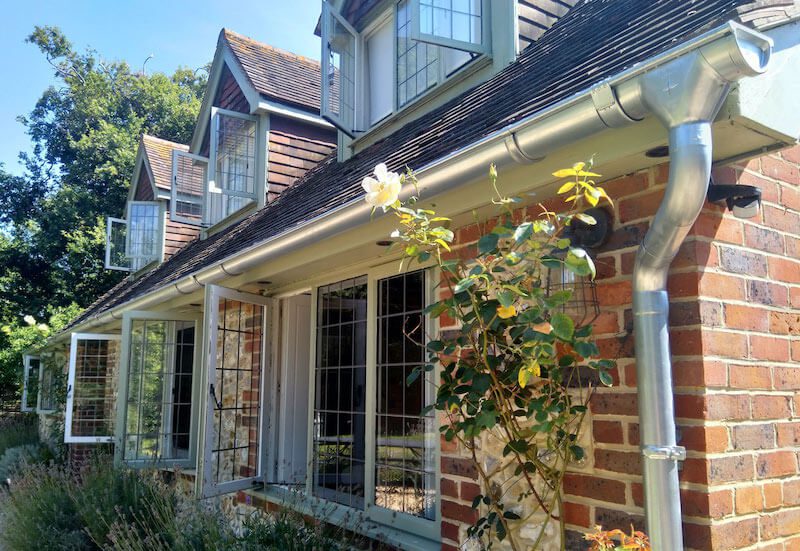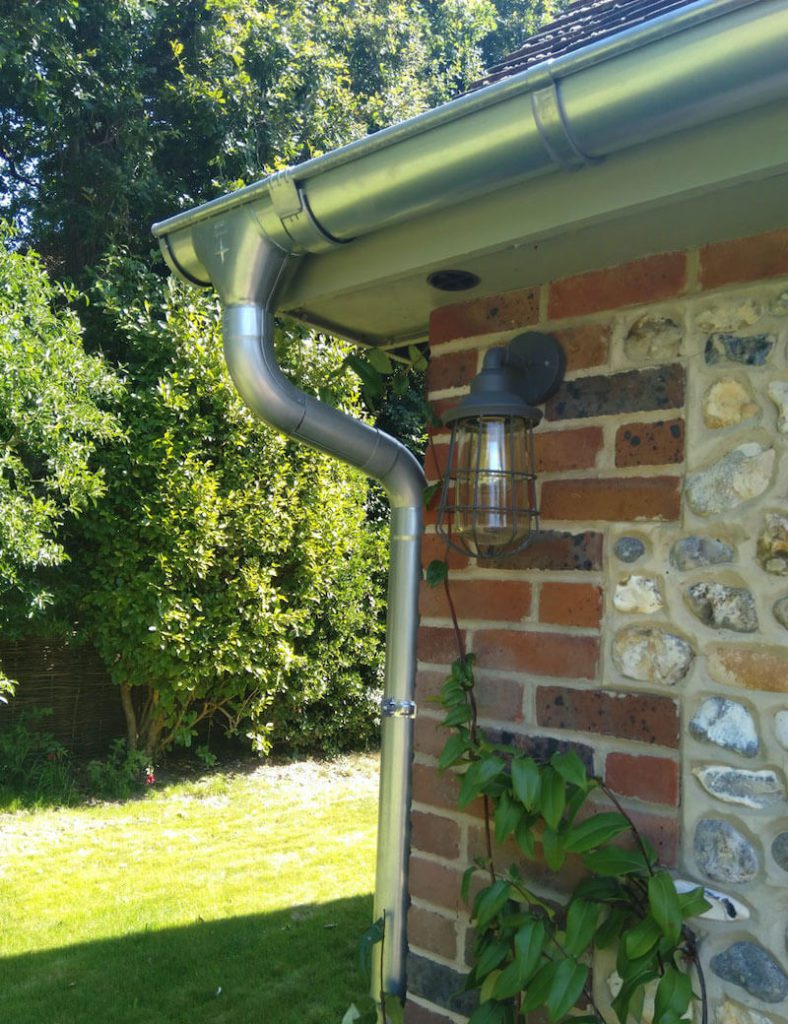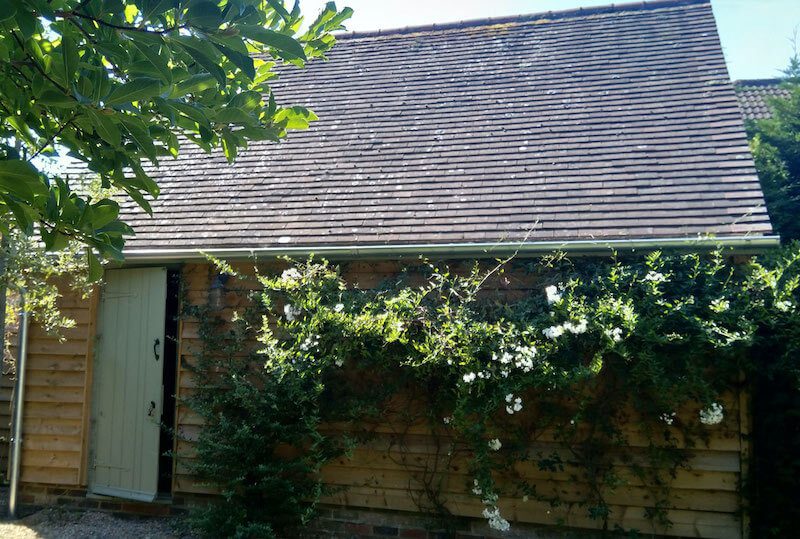Galvanised steel does not crack or warp like plastic guttering. And although unlike either aluminium or plastic, steel itself is susceptible to rust, the galvanising process (the application of a protective zinc coating) means that galvanised steel guttering is rust-resistant for up to 15 years – and longer if looked after well throughout that time.
Galvanised steel guttering also lends an elegant finishing touch to a home renovation or self-build project that plastic guttering simply can’t equal; it’s probably safe to say that very few people make a point of specifically looking at the guttering of a building, but it undeniably plays a part in the overall outward aesthetic of a home. When selling on, the presence of a good-quality galvanised steel guttering puts an emphasis on quality that helps potential buyers realise no corners have been cut, but not only that – sustainable design and a low carbon footprint are now, more than ever, an essential attribute in the housing market.
How eco-friendly is galvanised steel guttering?
As we as a society become ever more eco-conscious, we’re making decisions based on the long term rather than the short term. Galvanised steel guttering can be infinitely recycled and is always likely to be recycled. Not only is it a simple process to recycle, but as scrap metal, steel will always have a value: because of this, in the UK, 87% of constructional steel is recycled, 10% is reused and only 3% goes to landfill, and over 500 million tonnes of steel are recycled worldwide each year – that’s the equivalent of 180 Eiffel Towers [LINK: Steel recycling – Galvanizers Association (galvanizing.org.uk)].
Not only that, but in 2019 around 22% of globally produced steel was made by remelting scrap with electric arc furnaces (EAF) [LINK: Green Steel Production – How G7 Countries Can Help Change the Global Landscape (industrytransition.org)].
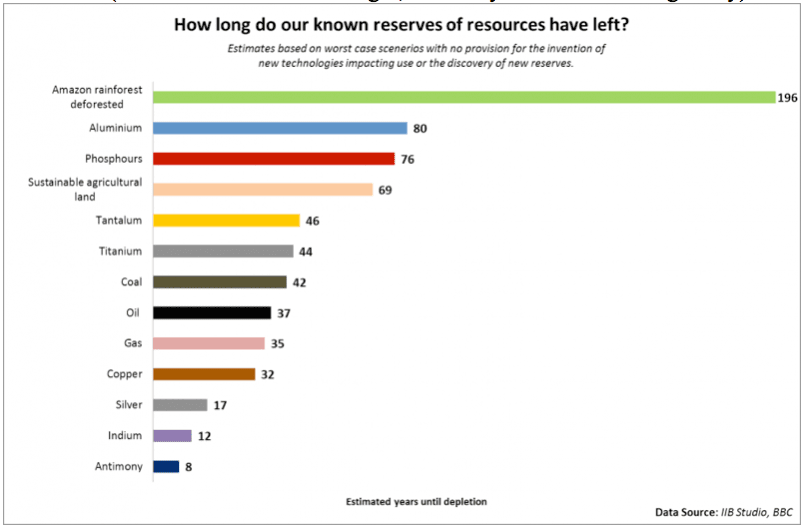
We are told in plastic guttering marketing that PVC plastic guttering can be recycled ( although it can only cope with it approximately eight times) but no one can guarantee that it will be recycled once it reaches the end of its life. With no scrap value, it could end up being sent to landfill to inevitably break down and add more microplastics to the environment. Whilst you can specifically hunt for, and buy guttering that claims to contain recycled PVC, all steel contains up to 25% recycled material as standard [LINK: Recycling | Steel (recycle-more.co.uk)].
There are more pros and cons to consider. Currently, in order to make galvanised steel guttering, in the majority of cases a coke-fired furnace must be used. In burning fossil fuels like coal and coke, greenhouse gases are released into the atmosphere; this increases levels of CO2 and other gasses, contributes to global climate change. However, it’s worth noting that fossil fuels are also used in the creation of plastic guttering.
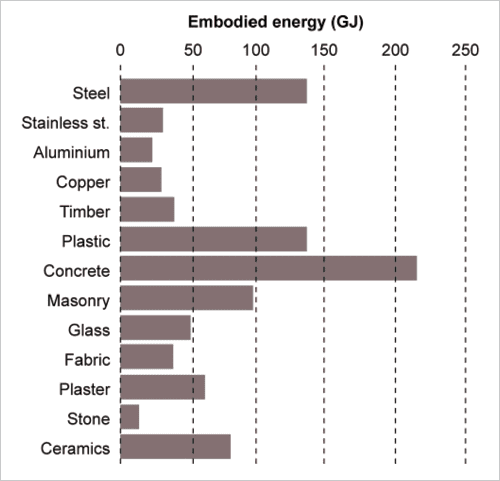
Plastic production is set to be a greater carbon polluter than the global coal industry by 2030; currently about 4-8% of annual global oil consumption is associated with plastics, and if our reliance on plastics persists, it will account for 20% of oil consumption by 2050 [LINK: How plastics contribute to climate change » Yale Climate Connections].
There’s also a brighter future for galvanised steel production, as the coke-fired furnaces are slowly reaching the end of their lives, at which point they are due to be replaced by cleaner hydrogen-fuelled furnaces.
Rainclear’s galvanised steel guttering is supplied by German-based company Zambelli, who have an ISO certification 14001 (the international standard for environmental management systems) in production processes management; their products are designed for extreme longevity, with all leftover raw materials brought back into the recycling circuit. They also replanted the trees displaced from the footprint of the new factory; today they use the waste heat created by the production machines to heat the factory and developed reusable transport frames to reduce packaging waste.
Voestalpine are the manufacturers of Rainclear’s colour-coated galvanised steel and are seen in the industry as a pioneer in environmentally friendly products and processes. At the Linz site, for instance, two-thirds of all waste and recyclables are fed back into the production process. Overall, the internal and external recycling rate is over 80%.
Is galvanised steel guttering noisy?
It can be, if you are experiencing a heavy rainfall; the nature of the metal will enhance the noise of the water as it hits the gutters and the offset of the downspouts. There are a few tips and tricks you can use to address the issue, such as a gutter hedgehog (this has the additional benefit of keeping the guttering free of leaves); or adjust the angle of the downspouts.
Does galvanised steel guttering leak?
Unlike metal, plastic is prone to high thermal expansion; as it expands and contracts in the changing seasons the joints of plastic guttering are more likely to fail, creating leaks. All metals have a considerably lower thermal expansion, so are less likely to leak; added to that, our Infinity Galvanised Steel system has highly durable and flexible EPDM rubber seals at every joint, and they will not leak if installed correctly.
Does galvanised steel guttering rust?
The galvanisation process protects the steel from rust for at least 15 years, and longer if it’s looked after in that time. Properties near the sea may need to take extra care and opt for a colour-coated version for a bit of extra protection from the elements.
When the steel is cut, the zinc molecules from the galvanisation process act as a seal-healing barrier, and will move over to protect the steel again – but you must use a hacksaw and cut the guttering by hand, rather than using a spinning blade, as heating up the zinc molecules can release toxic fumes.
Do I need to paint my galvanised steel guttering?
The colour coating on Rainclear’s galvanised steel guttering will not require repainting; the polyester topcoat is UV and scratch-resistant, so together these should last 25 years and come with a manufacturer’s warranty of 15 years. The uncoated galvanised steel guttering does not require painting, and ‘paint’ will not adhere to it (in order for us to supply it with a colour coating requires 4 robust, factory applied layers). Instead the zinc ‘galvanised’ coating creates a tough outer patina that protects the steel core – no other treatment is required.
Should I choose aluminium guttering or galvanised steel guttering?
Both aluminium guttering and galvanised steel guttering are more sustainable in the long-term than plastic (because both aluminium and steel can be, and commonly are, recycled infinitely); aluminium is considered more sustainable than steel at the moment, but galvanised steel is more affordable. So aluminium would be the most sustainable choice, but galvanised steel is the ‘affordable’ sustainable choice with lower-carbon credentials within sight.
Final word from our customers :
On plastic:
Andrew
“Plastic is a false economy, plastic is not robust and degrades quickly.”
On Steel:
Mark
“Once I’d done one set the others became easy”
“Very good high quality products and quick and easy fitting.”
Artur


